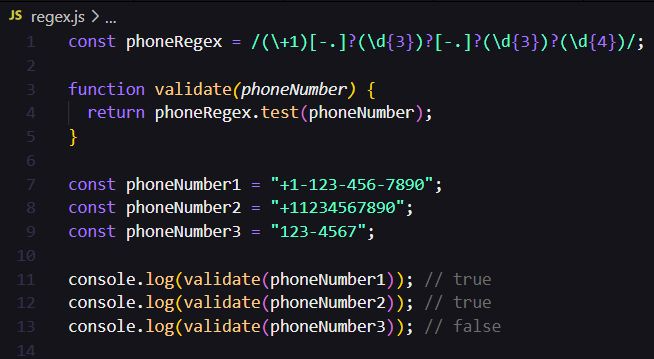Regular expressions are patterns used to match character combinations in strings. They are widely used for tasks such as text searching, validation, and manipulation.
📞 US Phone Number Example: `/(\+1)[-.]?(\d{3})?[-.]?(\d{3})?(\d{4})/`
Let's break this down:
<pre class="preFormatted"><code class="codeFormatted">
/: Forward slash indicates the start and end of the regex pattern.
(\+1): Matches the country code for the US, which is +1.
[-.]?: Indicates that a hyphen or period may optionally separate the country code from the next part of the number.
(\d{3})?: Matches three digits, typically the area code, and is optional as denoted by the question mark.
[-.]?: Optionally matches a separator (either a hyphen or a period) between the area code and the local number.
(\d{3}): Matches three digits of the local number.
(\d{4}): Matches the last four digits of the local number.
</code></pre>
Regular expressions are extremely powerful, but they can be complex. Make sure to test your regular expressions to ensure they're working as expected!
